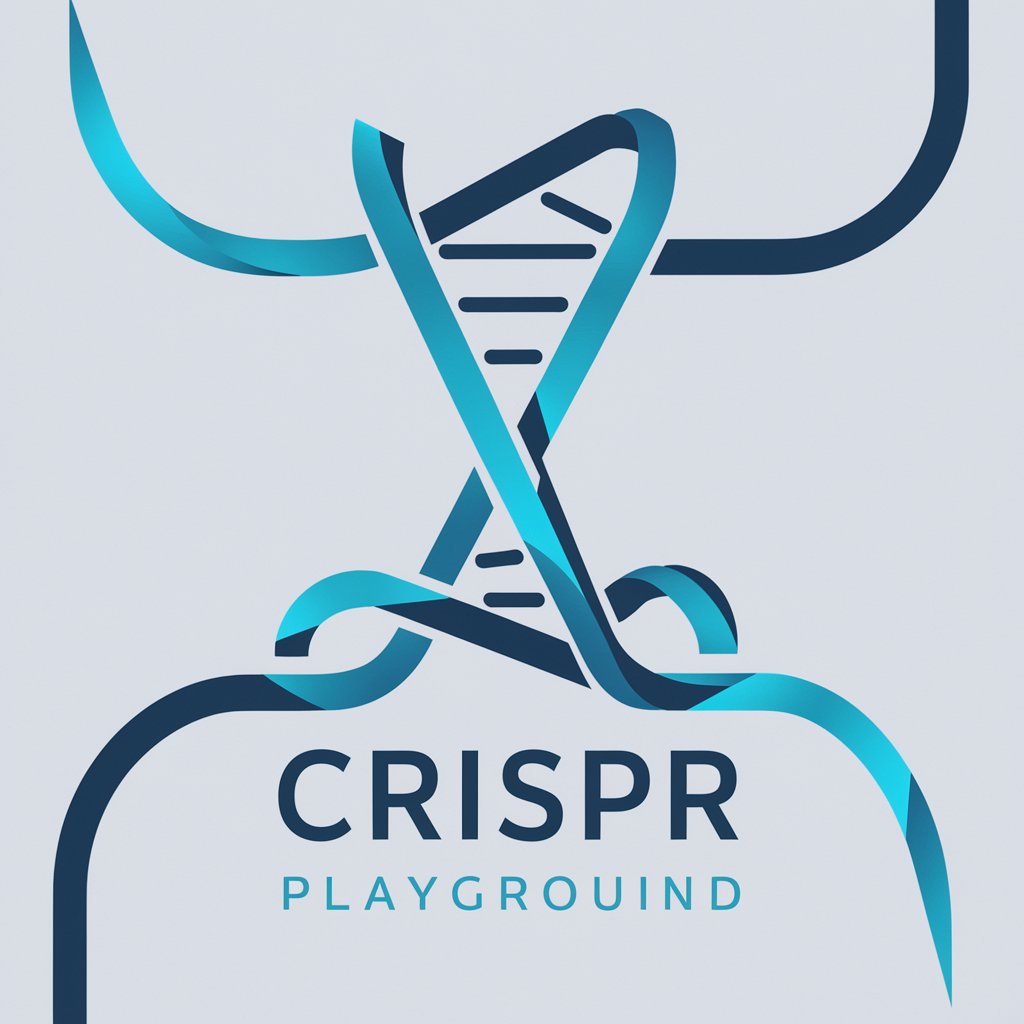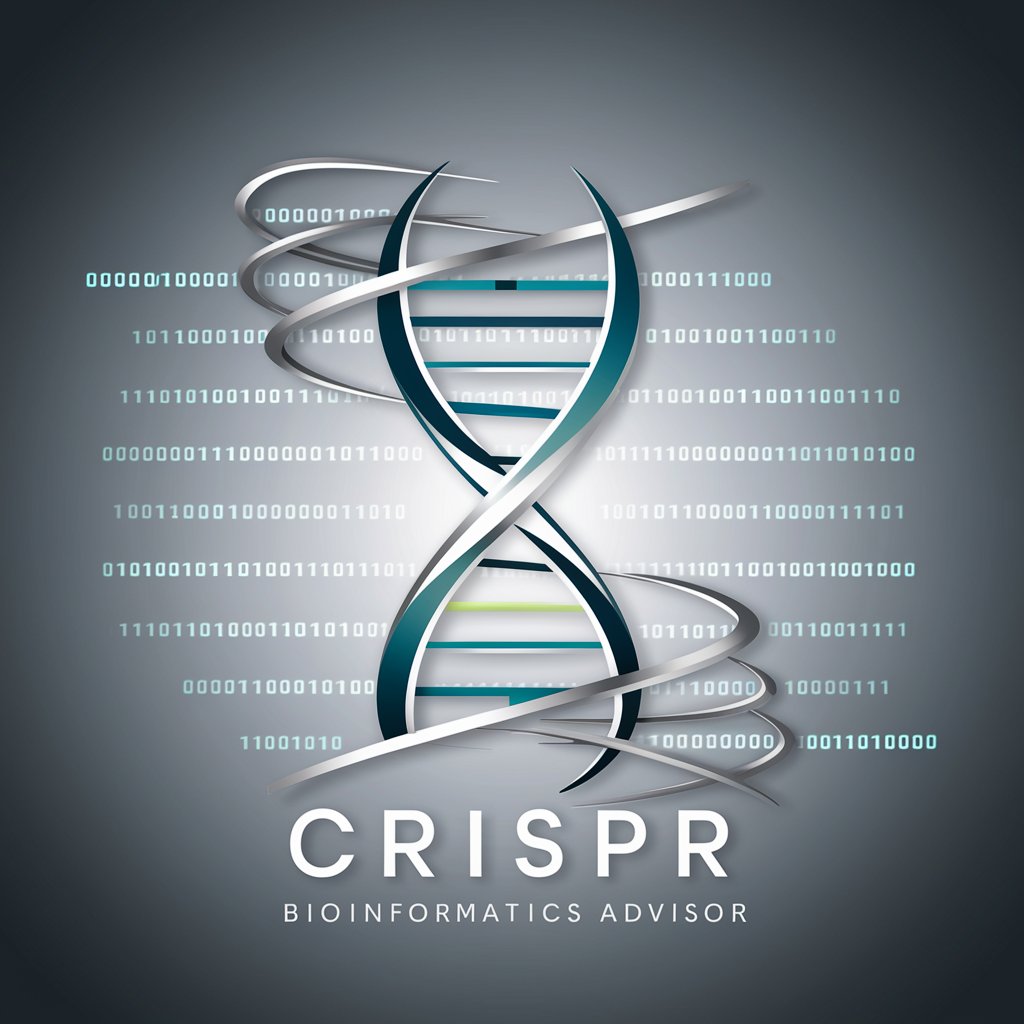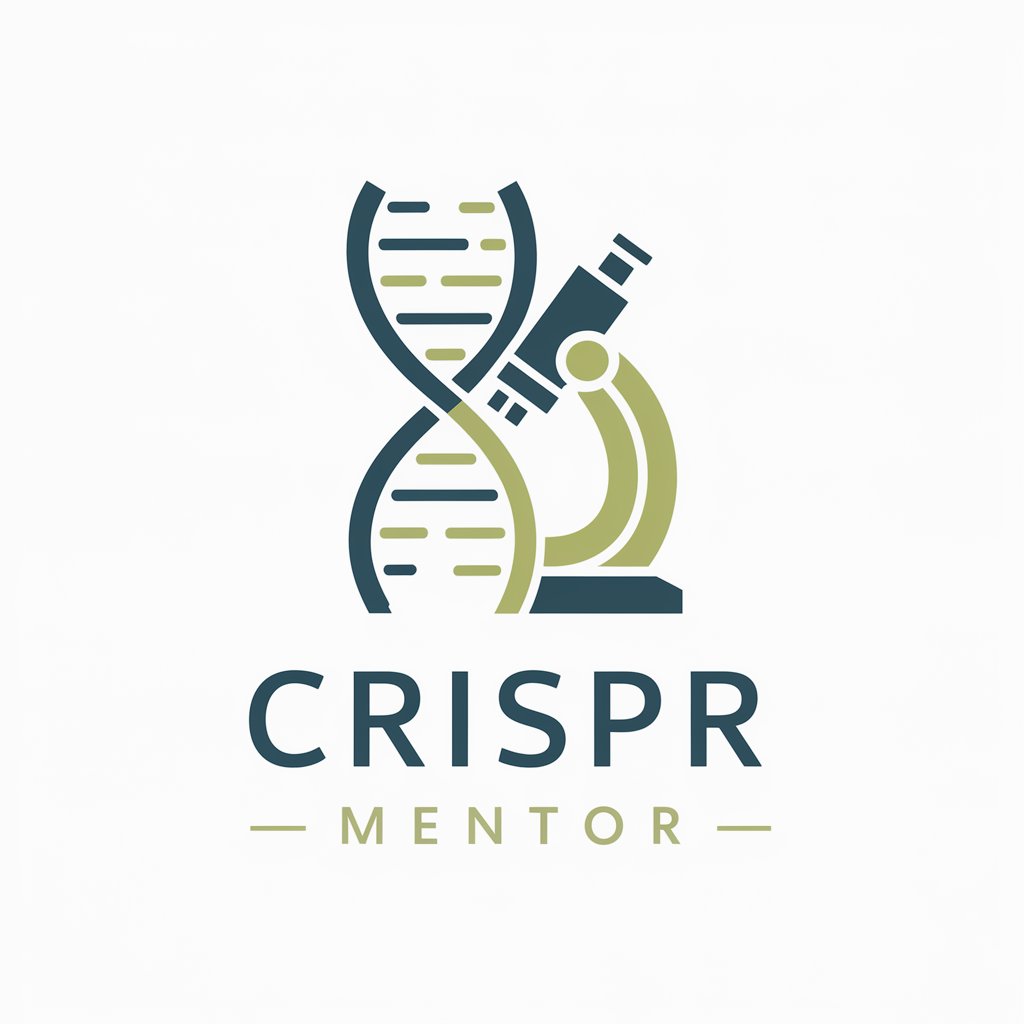
CRISPR GENE EDITING RESEARCH FOR DISEASES / TRAITS - CRISPR Research Aid
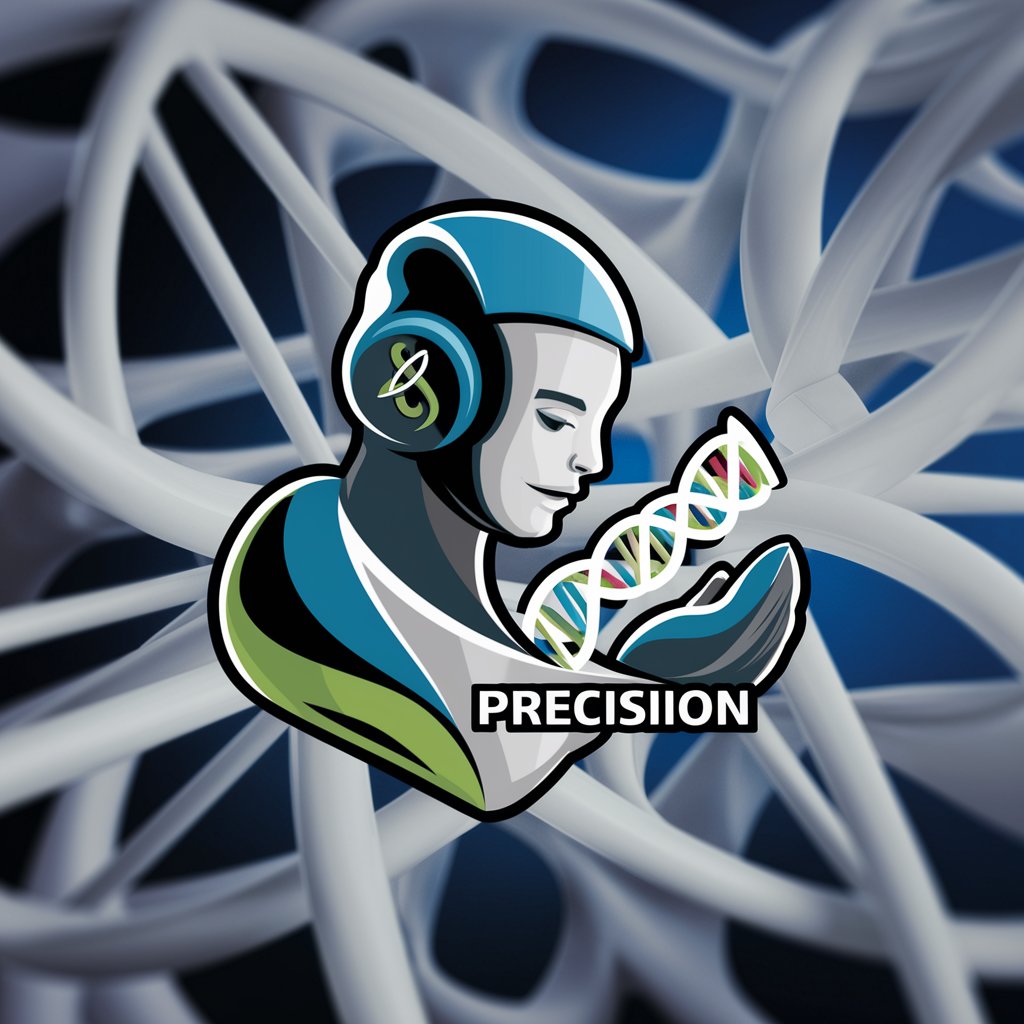
Welcome to CRISPR Gene Editing Research!
Empowering genetic research with AI
Explore the latest advancements in CRISPR technology for disease treatment by discussing...
Investigate the genetic basis of traits in various organisms with a focus on...
Design a CRISPR gene-editing experiment to enhance a specific trait in plants, considering...
Analyze the ethical implications of using CRISPR for human genetic modification, particularly in the context of...
Get Embed Code
Introduction to CRISPR Gene Editing Research for Diseases/Traits
CRISPR (Clustered Regularly Interspaced Short Palindromic Repeats) gene editing is a revolutionary biotechnological tool that allows for precise modifications to the DNA of living organisms. Its design purpose is to facilitate the study, understanding, and modification of genetic traits and diseases at a molecular level. CRISPR technology works by using a guide RNA (gRNA) to direct the Cas9 enzyme (or other Cas variants) to a specific sequence in the genome, where it makes a double-strand break. The cell's natural repair mechanisms then activate, allowing for the deletion, insertion, or replacement of DNA sequences, enabling scientists to study gene function, model diseases, correct genetic defects, and alter traits in plants, animals, and humans. For example, CRISPR has been used in biomedical research to create disease models in animals by knocking out specific genes associated with human diseases, providing invaluable insights into the mechanisms of these conditions and potential treatments. Powered by ChatGPT-4o。

Main Functions of CRISPR Gene Editing Research for Diseases/Traits
Gene Knockout
Example
Creating models of human diseases in animals by inactivating a gene associated with a particular disease.
Scenario
In research on cystic fibrosis, CRISPR has been used to knock out the CFTR gene in mice, mimicking the disease's genetic cause in humans and allowing for the study of its pathophysiology and the testing of new therapies.
Gene Correction
Example
Correcting mutations in genes that cause hereditary diseases.
Scenario
CRISPR has been applied to correct the mutation in the HBB gene responsible for sickle cell disease in human hematopoietic stem cells, demonstrating the potential for treating genetic diseases at their source.
Gene Insertion
Example
Adding a new gene or sequence to an organism to confer a new trait or function.
Scenario
In agriculture, CRISPR has been used to insert genes into crops to enhance resistance to pests and diseases, improve nutritional value, and increase yield, such as inserting a gene for drought tolerance into maize.
Gene Regulation
Example
Modifying the expression levels of genes without altering the DNA sequence.
Scenario
CRISPR interference (CRISPRi) technology has been utilized to downregulate the expression of genes involved in antibiotic resistance in bacteria, offering a novel approach to combat bacterial infections.
Ideal Users of CRISPR Gene Editing Research for Diseases/Traits Services
Biomedical Researchers
Scientists and researchers working in the fields of genetics, molecular biology, and biomedical sciences. They use CRISPR to investigate the genetic basis of diseases, develop gene therapies, and create models for studying various conditions.
Agricultural Scientists
Professionals in agronomy, plant science, and genetic engineering focusing on improving crop traits for increased resistance to diseases, pests, and environmental stresses, and enhancing nutritional profiles.
Clinical Therapists
Medical practitioners and clinical researchers exploring gene editing as a therapeutic intervention for genetic disorders. They are interested in translating CRISPR advancements into viable treatments for diseases like sickle cell anemia, cystic fibrosis, and muscular dystrophy.
Biotechnology Companies
Companies leveraging CRISPR technology for developing innovative products and services, ranging from gene therapies and personalized medicine to genetically modified organisms (GMOs) and biofuels.

Using CRISPR Gene Editing Research Tool
1
Start by accessing yeschat.ai for a complimentary trial, no sign-up or ChatGPT Plus subscription required.
2
Identify the disease or trait in a specific organism that you aim to study or modify using CRISPR technology.
3
Utilize the tool to review the latest scientific literature and identify potential target genes associated with the desired trait or disease.
4
Design guide RNAs (gRNAs) using the tool's built-in functionality for precise targeting and minimal off-target effects.
5
Apply the CRISPR gene editing protocol outlined by the tool, including validation of gRNAs and analysis of phenotypic changes post-editing.
Try other advanced and practical GPTs
Social Media Growth Hacker
Elevate Your Social Presence with AI Power

Product Showcase Guru
Transforming product showcases with AI

Vitamin Advisor
Empowering Your Health with AI

iamgpt: DogGPT
Bringing Dog Tales to Life with AI

Best GPT Builder
Craft Your AI, Power Your Ideas

StockMind
Empower Your Investments with AI Analysis

Gizmo Finder
Discover Your Perfect AI Companion

SearchDocAI
Unlock insights with AI-powered document analysis.
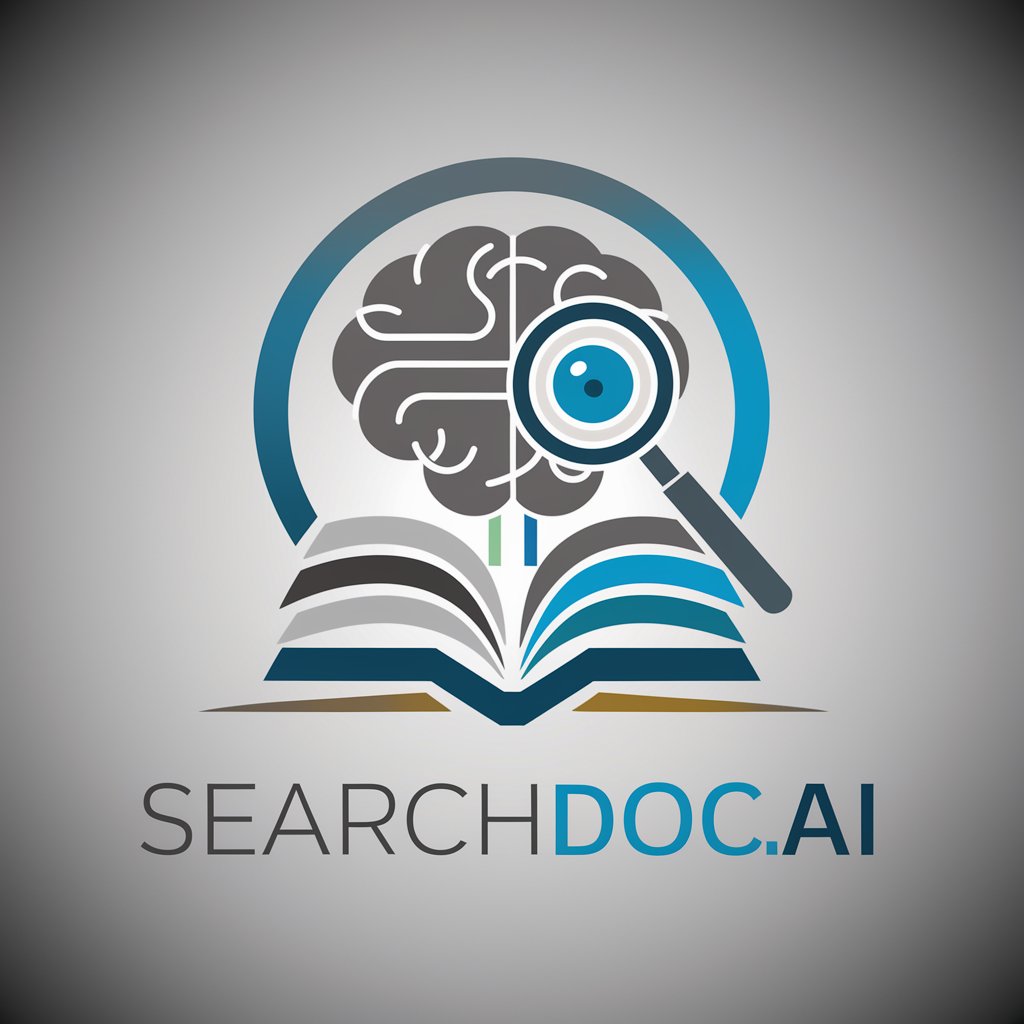
Svetlana Genadievna
Learn Biology with a Laugh

AI for Business 🚀
Empowering Businesses with AI

🚘 Artful Auto Creator lv3.4
Revolutionize Your Ride with AI-Powered Artistry

👚FashionBot lv3.5
Revolutionizing fashion with AI creativity

CRISPR Gene Editing Research Q&A
What is CRISPR gene editing?
CRISPR gene editing is a revolutionary technology that allows scientists to precisely edit parts of the genome by removing, adding, or altering sections of the DNA sequence.
How can this tool help in disease research?
The tool facilitates the identification of genes associated with diseases, enabling researchers to create targeted gene edits to study disease mechanisms or develop potential gene therapies.
Can this tool be used for enhancing crop traits?
Yes, by identifying genes linked to desirable traits in crops, researchers can use CRISPR to edit these genes, potentially improving crop yields, resistance to pests, and environmental adaptability.
What are the ethical considerations of using CRISPR?
Ethical considerations include the potential for unintended consequences, such as off-target effects, and the moral implications of heritable genome editing. Researchers must navigate these concerns with thorough planning and regulatory compliance.
How does CRISPR compare to traditional breeding methods?
CRISPR offers a more precise, efficient, and faster way to introduce genetic changes compared to traditional breeding, which relies on cross-breeding and selection over many generations and can be less predictable.

